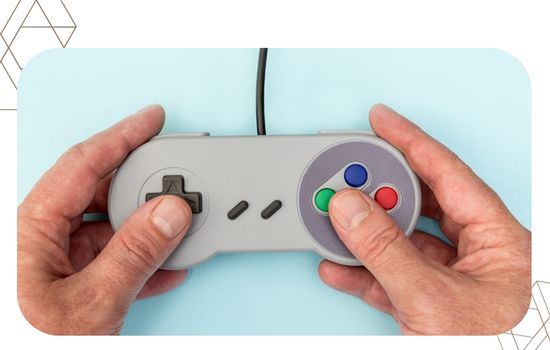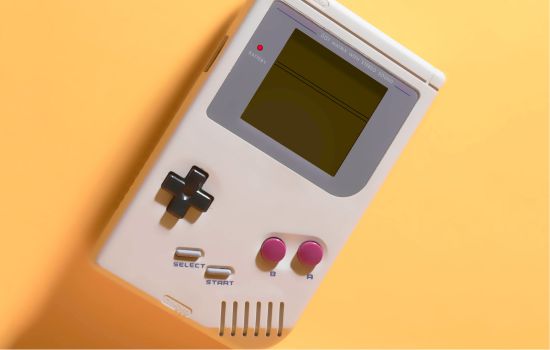Advertisements

The Classic consoles that marked generations They represent not only the technological evolution of digital entertainment, but also shared memories, friendships formed in front of a screen, and an industry that transformed pop culture.
From early two-button controllers to complex systems capable of rendering 3D graphics, these consoles weren't just gadgets; they were catalysts for a global phenomenon.
On this tour you will learn:
- The beginnings of the home video game market and how it changed the way we play.
- The most influential systems that left their mark on millions of people.
- The role of these consoles in the consolidation of historical sagas.
- An insight into their current legacy and how they inspire new generations.
At the end, you'll find a FAQ section to answer key questions about this journey through gaming history.
And before we begin, it's worth asking: what makes an electronic device become a symbol of an era?
Advertisements
The birth of a home-based industry
In the 1970s and 1980s, the arrival of consoles like the Atari 2600 opened the doors to a different kind of entertainment.
Video games used to be exclusive to arcades, but the ability to play in the living room radically changed the experience.
Atari introduced interchangeable cartridges, an innovative concept for its time, which allowed users to purchase specific titles without relying on a single, fixed catalog.
Although its graphical limitations were evident, it managed to popularize access to video games in millions of homes.
Nintendo Entertainment System: a cultural phenomenon
The real turning point came in 1983, when Nintendo launched the NES.
This system not only rescued the industry after the video game crisis of the early 1990s, but also introduced characters that remain global icons.
Mario, Zelda, and Metroid weren't just games; they were universes that offered adventures filled with narrative and creativity.
The NES not only sold over 60 million units worldwide, but set a standard for quality and control at a time when the industry seemed to be faltering.
Sega and the 16-bit war
In the late 1980s, Sega burst onto the scene with the Mega Drive (known as the Genesis in America).
With a more powerful processor and an aggressive marketing proposal, he managed to position Sonic as a counterweight to Mario.
The so-called “console war” between Nintendo and Sega became a media phenomenon.
It wasn't just a question of hardware, but of cultural identity: be part of Team Mario or Team Sonic? This clash fueled innovation and accelerated the development of better games, more colorful graphics, and faster experiences.
PlayStation: the gateway to modernity
When Sony introduced the first PlayStation in 1994, the market took a leap into the future.
The use of CD-ROMs allowed for the storage of music, cinematics, and worlds much larger than those available on cartridges. Series such as Final Fantasy, Metal Gear Solid and Gran Turismo They marked a before and after in the way of telling stories.
The PlayStation not only sold over 100 million units, it also paved the way for a generation that began to view video games as a serious form of entertainment, comparable to movies or television.
Nintendo 64 and the era of 3D
In 1996, Nintendo struck back with the Nintendo 64, which introduced millions of gamers to the 3D world.
Super Mario 64 It was a turning point in video game design: for the first time, an open world could be explored in all directions, with a freedom never seen before.
Another iconic example was The Legend of Zelda: Ocarina of Time, considered by many experts to be one of the best video games of all time.
This title not only took advantage of the hardware's capabilities, it also showed how classic consoles could transcend narrative and emotion.
The consolidation of the classical legacy
The transition to the 2000s meant the introduction of new, more powerful consoles, but the classic systems were not forgotten.
On the contrary, they became symbols of nostalgia and retro culture.
Today, many of these consoles have been re-released in mini versions or through digital subscription services.
According to a report by Statista (2024), the global market for retro video games exceeds $4.5 billion a year, driven primarily by collectors and gamers looking to relive the original experience.
Examples that show its relevance
- Retro community case in Mexico: In 2023, the Retro Gaming Expo in Mexico City brought together more than 20,000 attendees, demonstrating how the legacy of classic consoles lives on with a cross-generational audience.
- Influence on modern development: Many current designers cite the NES as an inspiration. Indie games like Shovel Knight They have recreated the 8-bit aesthetic, but with modern mechanics that have won over both veteran players and new audiences.
Illustrative table of the most influential classic consoles
| Console | Year of release | Approximate sales | Cultural impact |
|---|---|---|---|
| Atari 2600 | 1977 | 30 million | Popularized video games at home |
| NES | 1983 | 61 million | He revived the industry, created global icons |
| Sega Mega Drive | 1988 | 35 million | Rivalry with Nintendo, introduced Sonic |
| PlayStation | 1994 | 102 million | Expanded narratives and realism |
| Nintendo 64 | 1996 | 33 million | Innovation in 3D and open worlds |

Read more: History of video games: from 8-bit to virtual reality
An analogy to understand its role
The history of these consoles can be compared to classic literary works. Although contemporary novels with more extensive and advanced narrative resources exist today, no one doubts the importance of works like Don Quixote either The Odyssey.
Likewise, classic consoles are the foundation upon which everything we know today in video games was built.
More than nostalgia: a cultural legacy
In the middle of 2025, talking about Classic consoles that marked generations It is not just a trip to the past.
It's also about recognizing how they influenced the present. They inspired developers, formed communities, and created quality standards that are still applied today.
Today, with virtual reality and artificial intelligence transforming the market, these consoles remind us that the essence of video games remains the same: connecting people through fun, challenge, and creativity.
Conclusion
The Classic consoles that marked generations They are more than museum pieces. They represent the cultural and technological foundation of an industry that continues to grow.
Without Atari, NES, Sega, PlayStation or Nintendo 64, it would be difficult to understand the present of video games.
The value of these systems transcends the technical: they are a testament to how innovation, competition, and creativity can change not only the way we play, but also the way a society entertains itself and builds collective memories.
Read more: Artificial Intelligence in 2025: How It Is Changing Society
Frequently Asked Questions (FAQ)
1. What was the first console to become popular worldwide?
The Atari 2600, released in 1977, was the first system to reach millions of homes.
2. Why is the NES considered a historic console?
Because it revived the industry after the 1983 crisis and established iconic characters that are still relevant today.
3. What impact did Sega have on console competition?
It introduced a model of rivalry with Nintendo that encouraged innovation and aggressive marketing.
4. Why is the PlayStation seen as a change of era?
Because it allowed for more complex narratives and realism thanks to the CD-ROM format.
5. What game defined the Nintendo 64?
Super Mario 64 It was the title that marked the transition to 3D and changed video game design forever.
6. Do classic consoles still have a market in 2025?
Yes, retro gaming continues to grow, both in collecting and official reissues.
7. What lessons do these consoles teach us today?
That innovation and creativity are more important than technical power alone.



